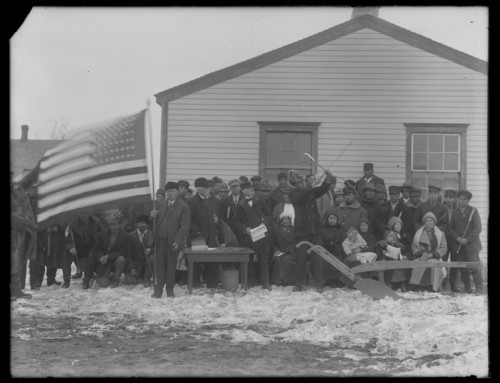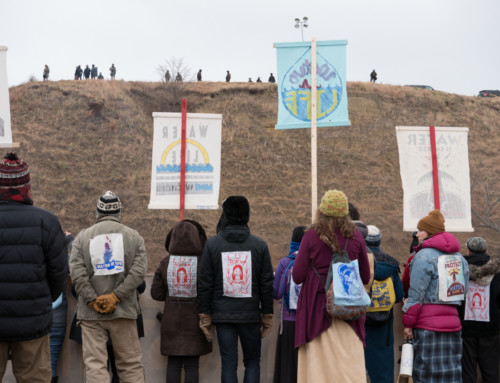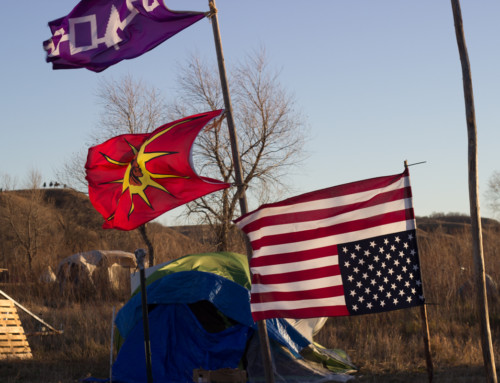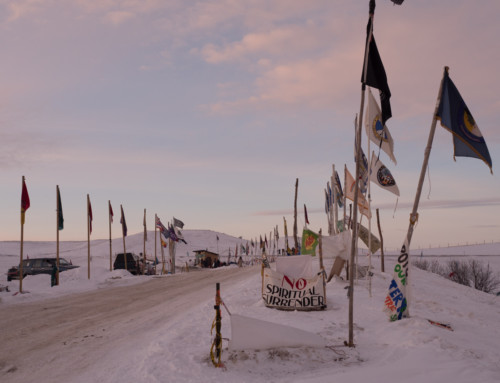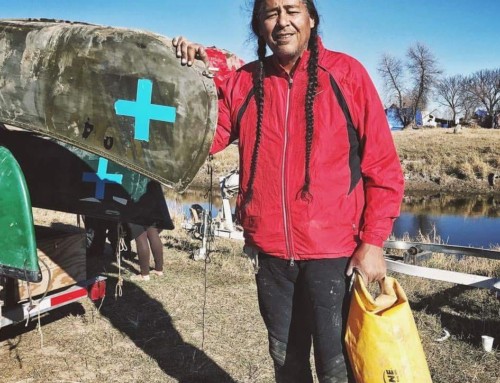Conversation with Federal Agents dispatched to Standing Rock
In a recent meal at Standing Rock, I sat near federal agents dispatched to Standing Rock. They were told to support BIA in “protecting the Cannon Ball Community from the protesters”. I considered this a significant over-simplification and want to take time to reflect on the broader view.
Over the past few months I have been welcomed by many Standing Rock families and branched out to learn of a web of varying life paths and perspectives. I relied on these connections and conversations to discuss the more complicated aspects of Standing Rock with these federal agents. It was my attempt to give them some sensitivity training that was not provided prior to their arrival.
They were under the impression that the majority of Standing Rock was against the camps yet they were sitting in a locally owned restaurant with “Mni Wiconi” written on the wall alongside #NODAPL and pictures of Sitting Bull. This restaurant is one of 2 restaurants in the entire town. Furthermore, the blockade that they manage at night has turned back deliveries of food from this exact restaurant over the past week.
The conversation was long and one of them used more charged words, but I hope I painted a more broad and complicated picture that I will dig into here:
BIA is a complicated subject to begin with and working with the BIA does not immediately mean it is supported by the Tribal Government or the Lakota People. The BIA is the same force that murdered Sitting Bull and is a U.S. Government Agency. I certainly would be disturbed if my family raised the symbols of my murderers over my memorial. Some residents purposefully use alternate names for towns and areas to disassociate from historic BIA officer names. McLaughlin Town is an example where some refuse to call the name of the Indian Agent (BIA) that ordered the arrest of Sitting Bull. Some refer to the area as Bear Soldier instead. Fort Yates is called Long Soldier and Bullhead is discussed as Rock Creek. Bullhead is another involved in the murder of Sitting Bull. I still ride by the Sitting Bull Memorial puzzled as I gaze at U.S. flags surrounding the site.
However, there are many families that yielded to U.S. assimilation techniques such as boarding schools and manipulation of economic strain to decide that cutting away Lakota identification and resistance was in the best interests of their future generations. Many grandparents discouraged active resistance and would not teach the Lakota language as they saw accepting U.S. citizenship and way of life as the imminent way (that was not worth fighting about any longer). This view also helps create the Native American Veterans that now fight under the same flag that murdered men, women, and children within their own families only a century ago.
These pressures also create a BIA force that is mixed between enrolled members of Standing Rock and other Tribes along with immigrant families (immigrants to the continent within the last 300 years).
In addition, the Rez life features intermarriage with ideas outside of the traditional Lakota values. French Trappers were some of the first to marry in this area along with lower class Irish and other immigrants. These mixtures further complicate identification and levels of resistance or assimilation/cooperation.
Indian Country has a very split view of BIA in general with some Tribes choosing to have their own tribal police such as Cheyenne River and other tribes relying on the U.S. government completely to provide a police force on their reservation. Standing Rock chose to rely heavily on BIA in part due to a budget consideration whereas Cheyenne River has continuously operated their own Tribal Police even without a budget to pay them full compensation (before 638 contracts). Cheyenne River’s Chairman gave a short interview on Thursday when the raid on Ocheti occurred. He said that BIA has run its course in Indian Country and it is time for them to leave Indian Country completely.
I educated the federal agents on the 7 Bands of Lakota. Standing Rock is 1 of the 7 bands that make up the Great Sioux Nation and their band is Hunkpapa. Cheyenne River Nation makes up 4 of the 7 bands. The federal agents were under the impression that Standing Rock wanted all to leave the camps and that the “protesters” remaining were outsiders with no tribal connections. They were skeptical when I explained that Cheyenne River stayed in a large force even now and they alone make up the majority of the bands of Lakota Nation. They are aware of the blockade squeezing and intimidating Cheyenne River’s higher ground camp still just off 1806 today. I tried to show that there is a disconnect between elected officials and some Standing Rock enrolled members.
A Standing Rock resident came in and discussed his position as the conversation continued. He said that he is a law-abiding citizen and never supported the camps. It has wrecked the budget for the Tribe by hurting the casino revenue. He went on to say that 80% of the Tribe is against the camps and that all who work on the reservation have always been against the camps.
I responded in this now group forum that I have not taken a poll to understand the percentages, but I do recognize the specific interests against the camps depending on occupation. A fisherman or fishing guide is more likely to support the camps compared to a person that relies on the casino for employment. A cattle operation that is upset with the higher drive time to livestock auctions North of the Backwater Bridge will be more likely to not support the camps. However, many ranchers from Standing Rock were camped on the Oceti side and I know them personally. One in particular told me the story of his grandparents taking money (about $600) as part of the deal for Standing Rock to allow Lake Oahe to be formed. He now has a large farming operation on Standing Rock and said that he is here against the pipeline because he will not make the same mistakes his grandparents made when he was a child. “They could not pay me a million dollars to trade the wellbeing of future generations”.
The agents did not realize I had visited a few friends that work at the Tribal Office earlier in the week along with friends that work at the Standing Rock School System (High, Middle and Elementary), Sitting Bull College, the local Correctional Facility, local daycare, car repair, and Transit Center who all support the camps. These friends all have jobs on the reservation and many have not only supported the camps, but are campers themselves. Some have even been arrested at actions. The reason that some of them were not there in camp on eviction day was because they had jobs and only stay there during the weekends even now.
I don’t know if these agents believed this more complex and less told story. They were not protecting the reservation from protesters. A portion of the reservation is the protesters along with allies from other tribes and other areas. We have had many friends in the Cannon Ball Community who have fed us and given us a place to wash clothes and shower. Even now, more private landowners are opening up their land for camps to move to in defiance of the elected officials’ decisions against all camps.
I completely agree that there are 3 main positions on the reservation: those who support camp, those who used to support camp and changed, and those who never supported camp. I do not know the percentages, but I doubt anyone claiming to know the percentages. Many people work on the underground due to threats against them from the tribal office or other complications. Others openly speak their mind.
The Cannon Ball District eviction resolution was based off of a very small fraction of the community (less than 30 attended the meeting and many Cannon Ball residents claim that they were not informed a meeting was being held).
Another family explained to me that some who are speaking out against the camps now are speaking out of financial frustration that they did not receive donations or support in the way that someone else did. They assured me that even some retired BIA from Standing Rock saw the camps as something different and expressed sadness at their closing. Some retired BIA visited the camps often throughout the Summer.
I do recognize that the people of Standing Rock have options to make their voice heard if they are in opposition to the elected officials’ decisions against the camps. I am aware of some attempts to petition against the Cannon Ball District Resolution, but am unaware at its success so far.
I speak from direct knowledge, that many families leasing farmland or in other agreements with the tribal government have been threatened with economic sanctions if they continue outwardly supporting the camps. I also understand from sources that some of the conflicts go much deeper than this current years’ worth of events.
Lastly, I looked up the history of 1 of the 4 agents at that table and found a disturbing trail of complaints against them. This agent has a history of assault complaints in SD and was even featured in an Ag magazine for pushing an older farm owner on his own property during questioning regarding a flood area. This old farmer walks with a cane due to injuries from polio and was helped by his daughter during the incident. I am concerned that the best of the best were not sent for this night shift. I see the other 3 as more of not knowing what they were getting into coming from the East Coast.
More to develop and follow up on, but I hope I got through in a small way to those federal agents. I taught them to say see you later in Lakota before they left- maybe they at least will take that little piece of language revitalization with them as they go on “doing the bidding of oligarchs” (in the words of a good Cheyenne River friend).
-Trey
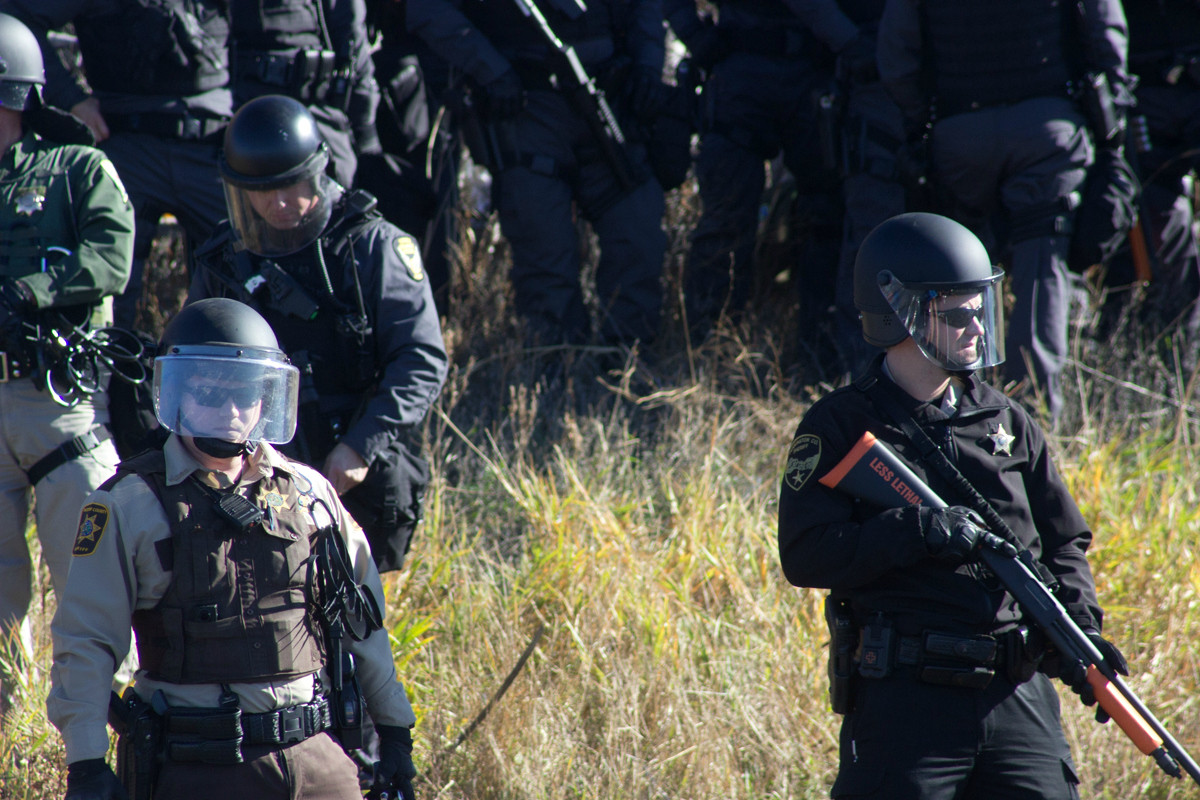
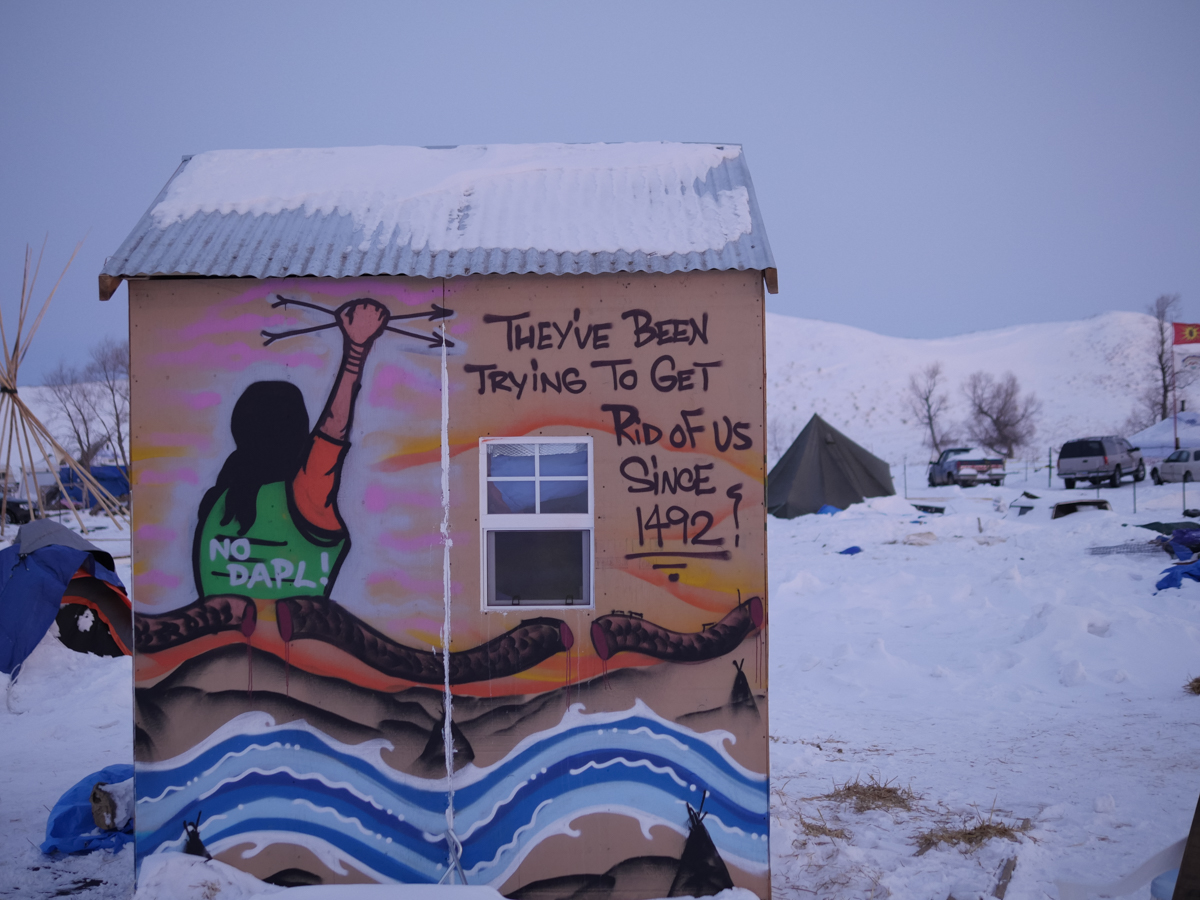
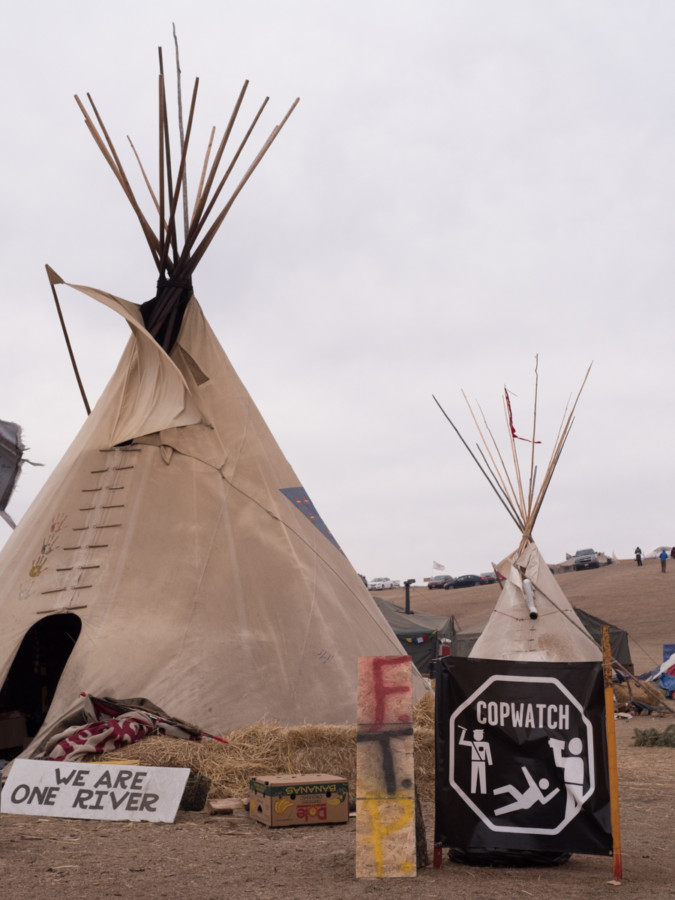
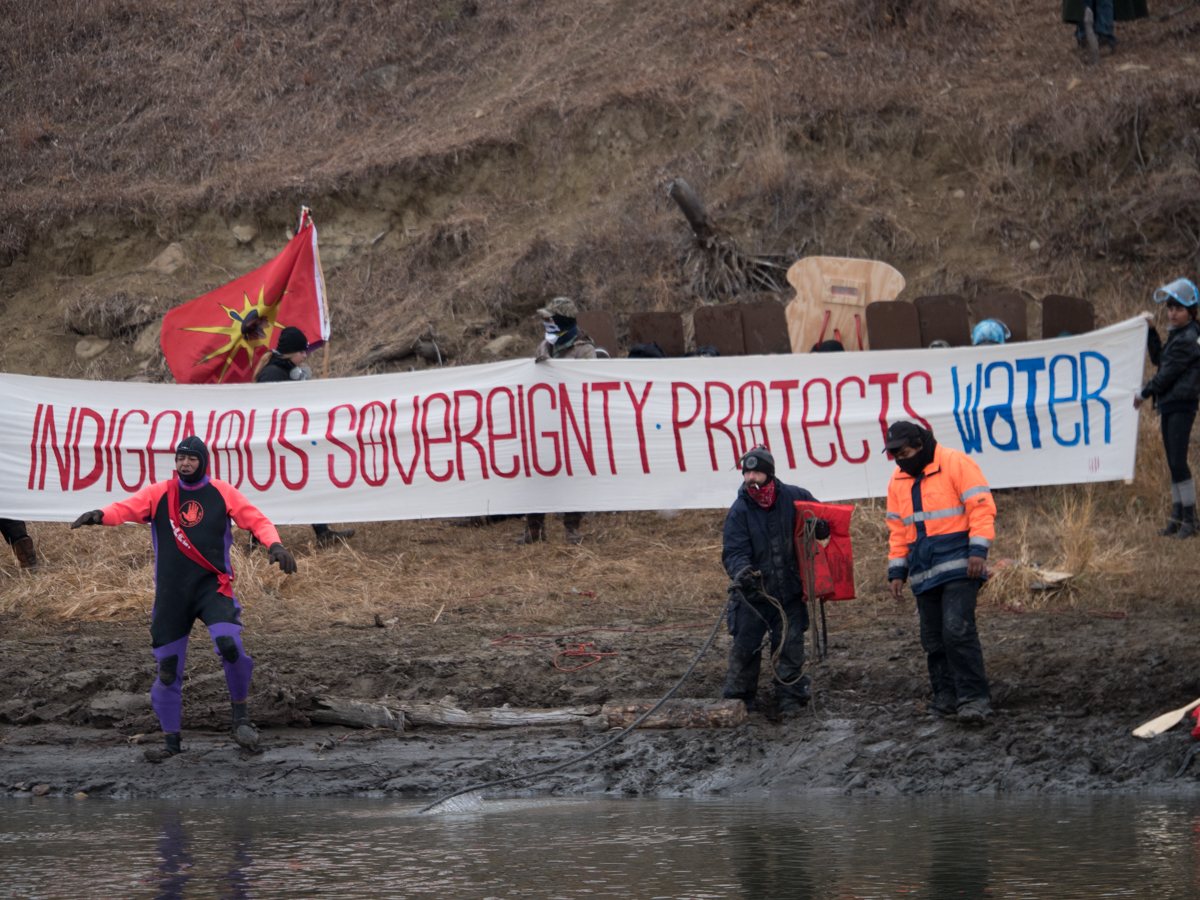
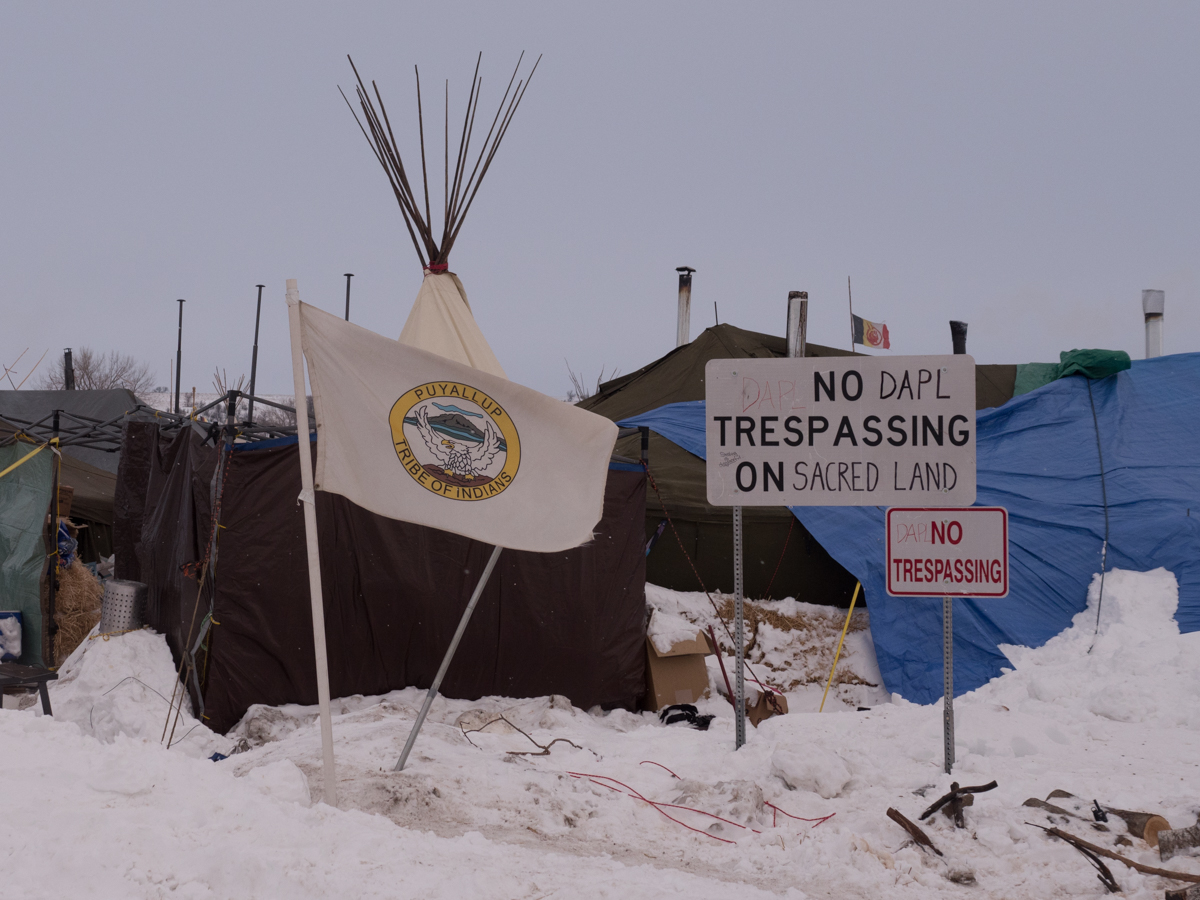
[embedyt]https://www.youtube.com/watch?v=5EeHO-QyaWU[/embedyt]

